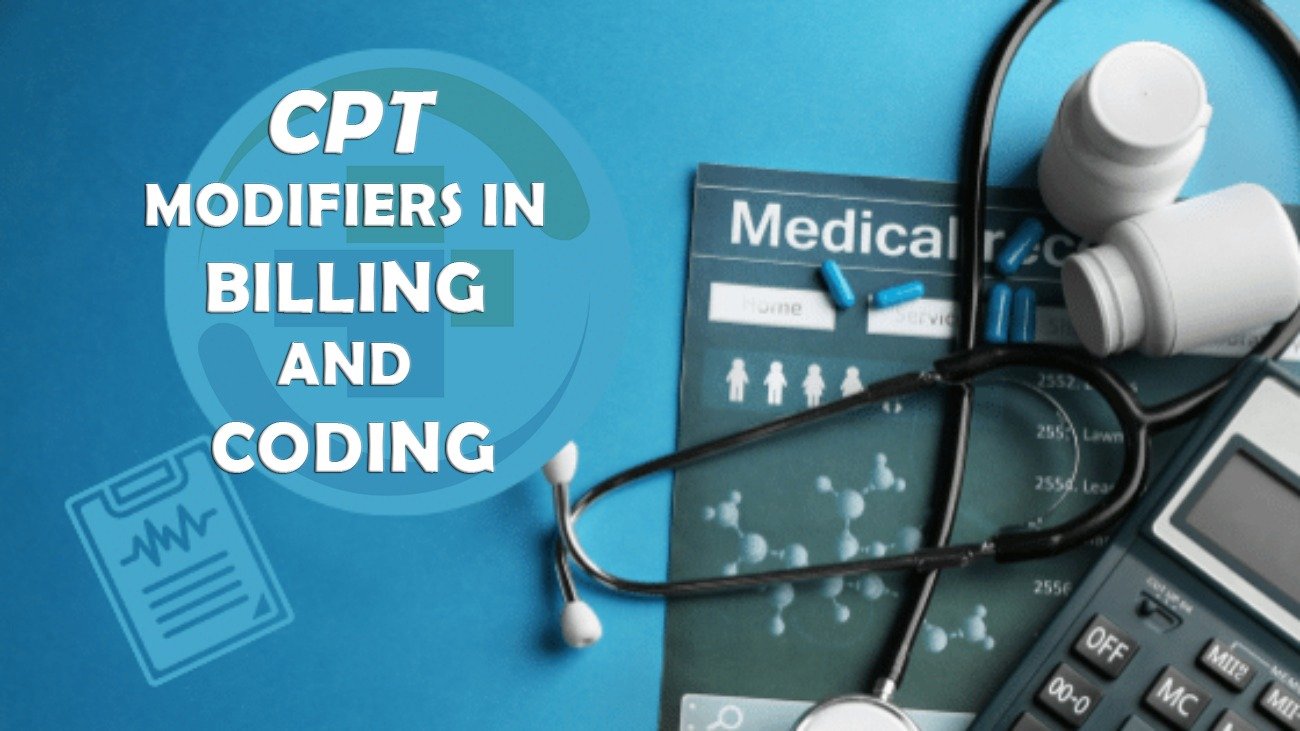CPT MODIFIERS IN BILLING AND CODING
CPT modifier (Current Procedural Terminology) is a two-digit code that is most commonly used in medical billing and coding. CPT is used for information about procedures or services in the medical billing that a healthcare provider offers to its patient. CPT two-digit code explains specific procedures, variations or circumstances during the provided treatment. CPT modifiers provide additional details or descriptions of services or care links to the physician services. Modifiers clearly describe the medical procedure by making changes in its definition. The article will shed light upon the commonly used CPT modifiers used in medical billing and their meaning.

CPT Modifier 25:
It is used for the evolution and management of services or procedure that the same healthcare provider offer to its patient on the same day as a new service or procedure offered to the patient by another professional on the same day. It might be possible that the patient receives services and procedures mentioned in the code but needs evolution and management of procedures or services beyond the identified services beyond usual post or preoperative patient care. The evolution and management of services are prompted by the condition of the patient. It also requires the reimbursement of both procedure and evolution and management (E/M) of services.
CPT Modifier 50:
It is used to indicate the performance of additional procedures on both sides of the body during the same or encounter operative sessions. The modifier is used for the symmetrical performance of the procedure on body parts like eyes and knees.
CPT Modifier 51:
Modifier 51 is used for performing two or more procedures together in the same or encounter session. It is indicated that the payer needs to make additional reimbursement for the new procedure in medical billing.
CPT Modifier 58:
It is used for pre-planned and documented therapy that a patient received after a major surgery. The surgical modifier 58 in medical billing taken as a new procedure requires reimbursement for the continuity of new medical procedures in the postoperative period. It almost covers all the procedures linked with the first operation.
CPT Modifier 59:
Modifier 59 is used when two or more procedure has to be performed on the same patient on the same day but not as bundled together. It used to indicate that there should be separate reimbursement for additional procedures in medical billing. These are producers that are unrelated to each other and require a different physician to perform on a patient on the same or another day on the same organ or system. So, reimbursement in medical billing depends upon the sub-surgical CPT modifier.
CPT Modifier 76:
It is used for the repetition of medical procedures on the same day due to some certain medical condition. It indicates that services or medical procedures should be repeated on the same day after an original medical procedure. Modifier 76 clearly shows the difference between repeated and duplicate services.
CPT modifier 78:
It is used for unplanned post-operative procedures. It indicates the unplanned return of a patient to Operation Theater or the procedural room right after getting the original treatment. It indicates the unexpected outcome of previous surgery like infection, haemorrhage or debridement after surgery requires the immediate return of the patient to the operative or procedural room. The key is second procedure must be linked with the first medical procedure. In addition to it, surgical modifier 78 is not only used to fix complications but also to tackle everything related to post-operative procedures.
CPT modifier 79:
It is used for the return of patients to the same healthcare professional during the postoperative period for receiving unrelated medical services. It requires performing different procedures or services on the same anatomical site by the healthcare provider during the postoperative period.
Conclusion
The article has discussed a few examples of CPT modifiers. There are multiple CPT modifiers are available to convey specific information related to the service period. The thing that needs to understand is to consult the official guideline of CPT coding. So that payer will be able to pay for the specific services used for coding and medical billing purposes. Medical billing with the right modifier ensures less claim rejection and eventually contributes to higher reimbursement. It enables healthcare workers to save money for medical employers.
For further details and daily updates please follow us on LinkedIn or join us on Quora
